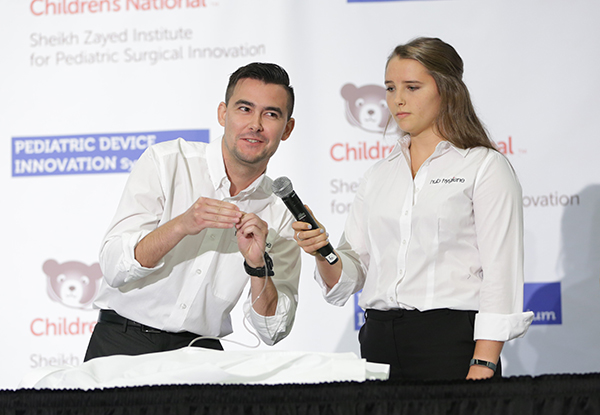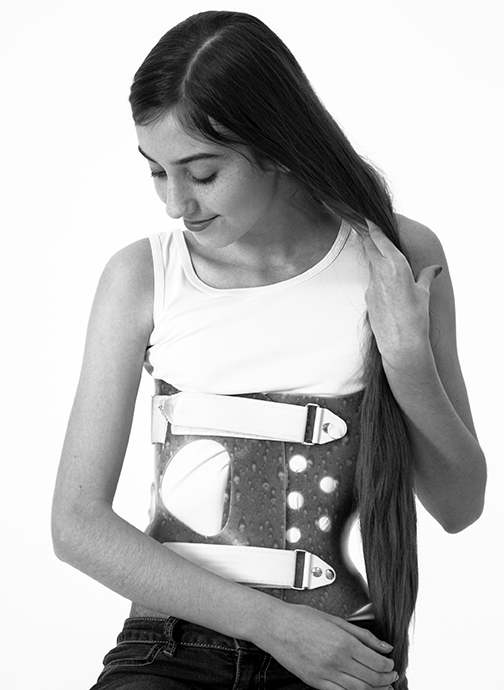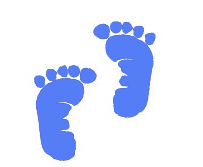
–UPDATE March 29, 2019– The deadline for the “Make Your Medical Device Pitch for Kids!” has been extended to Tuesday, April 9 at midnight ET. –END UPDATE–
The majority of medical device companies continue to shy away from developing pediatric medical devices because the process is costly and the market is small. They don’t see the ROI. One organization that has been particularly active in advocating for the development of devices for this important population is the Sheikh Zayed Institute for Pediatric Surgical Innovation at Children’s National Health System, which in conjunction with the A. James Clark School of Engineering at the University of Maryland, started the National Capital Consortium for Pediatric Device Innovation (NCC-PDI) six years ago. NCC-PDI also added healthcare accelerators BioHealth Innovation and MedTech Innovator to the consortium recently and created the Pediatric Device Innovator Accelerator Program.
This year NCC-PDI is hosting its annual pediatric device competition, which awards innovators with up to $50,000 each to help them bring their devices to market, and is focusing on the subspecialty of orthopedics and spine, an area in which there is a critical need, according to Kolaleh Eskandanian, Ph.D., MBA, PMP, vice president and chief innovation officer at Children’s National Health System and principal investigator of the NCC-PDI. This is the consortium’s eighth competition in the past six years. As much as $250,000 in grants will be awarded to companies that take part in the “Make Your Medical Device Pitch for Kids!” competition, which is seeking devices in orthopedics or spine that can be tested in pediatric patients under 18 years old. Companies have until April 2 to enter; finalists will be announced on April 15, and winners will be named on April 30.
Eskandanian recently had a discussion with MedTech Intelligence about the importance of creating devices specifically for children and the significant void industry is seeing within the orthopedics and spine sector.
MedTech Intelligence: When considering the pediatric population, why are the critical needs within the orthopedics and spine segment?
Kolaleh Eskandanian, Ph.D.: When FDA did its needs analysis about two years ago, orthopedics and spine was one of the subspecialties that emerged as underserved in terms of pediatric devices, specifically because orthopedic conditions in children are very unique because of their bodies—their bones, muscles and joints are still developing. This is where we have pronounced lack of medical devices that are labeled specifically for pediatric use. Related to off-label use, orthopedic surgeons are out of tools. When going into their toolbox, they have nothing to select from other than adult devices. They have to modify them on the fly for use in children.
MedTech Intelligence: What are some of the anatomical differences that device designers need to consider when developing orthopedic devices for the pediatric population?
Eskandanian: Often we think of kids as small adults. When bone is involved that definitely isn’t the case. Children’s bones are very different; they grow quickly, and rapidly growing bone is more elastic—but it can bend without breaking all the way through. That is a unique and different [characteristic] in the pediatric population. Also, bone has the capacity to remodel over time. This is the major anatomical difference in the growth aspect of children as it relates to bones and spine.

MedTech Intelligence: Has the landscape changed at all for pediatric device development or are we still seeing a lack of companies in this space? Are things getting any better?
Eskandanian: It’s getting better. When we started six or seven years ago, there was no public awareness about the need for medical devices that are specially tested and developed for children. The status quo of using off-label devices was okay. We have accomplished a lot since then. Our scorecard—the five-year report card from the first cycle of grant from FDA shows that we assisted over 88 medical devices that came either from research labs or from start-up companies. Out of those, five devices received either the CE Mark in Europe and FDA clearance in the United States. Our consortium focuses on companies wherever they are—it’s not a regional focus. We assisted companies from many states as well as internationally.
With the money that is available to the companies through the competition—$50,000 might not sound like a lot, but we put them through a consultation process where they receive expert advise, and regulatory and consultation support. And another metric—the follow-on funding by the [above-mentioned] 88 medical devices was $83 million. By coming to our competition they note only receive some funding but they were also spotted by future investors and collaborators during the symposium.
MedTech Intelligence: Is the development of pediatric devices still mainly in the hands of start-up companies?
Eskandanian: Generally it’s correct to say that start-up companies is where the brightest ideas start—this is where the innovation in this space mainly happens. But we had a couple of big wins in larger companies in terms of clearing pediatric devices. Abbott recently received FDA approval for a smaller cardiovascular device for newborns. We see that as a win for the industry and the pediatric community.
MedTech Intelligence: What are your thoughts on the future of pediatric device development?
Eskandanian: FDA and specifically CDRH continue to be very supportive in recognizing the need for more devices that are developed and tested specifically for the pediatric population. FDA also recognizes that the definition of pediatric age for the purpose of device development is from birth through 21. I think we’ve seen some companies take advantage of pediatric incentives by having their devices tested in the population of 18 years and older, neglecting that younger population. FDA would like to see more riskier devices/PMA Class III devices to also be tested in the younger sub-populations. Another reason that we pick a topic for our competition [each year] is to make sure that we address the unmet need of the youngest subpopulation within the pediatric range of 0–21.
For this specific population we are aware there are a number of patient advocacy groups for kids. One thing we’re doing during the competition is to have a panel of patient advocates, from children to the end user, to help us identify and prioritize the desired outcomes from the community of innovators. We’re also having a patient advocate to sit on the judging panel to include this perspective.
(Featured image credit — Girl in Scolosis Brace: Sydnee Lubar)








